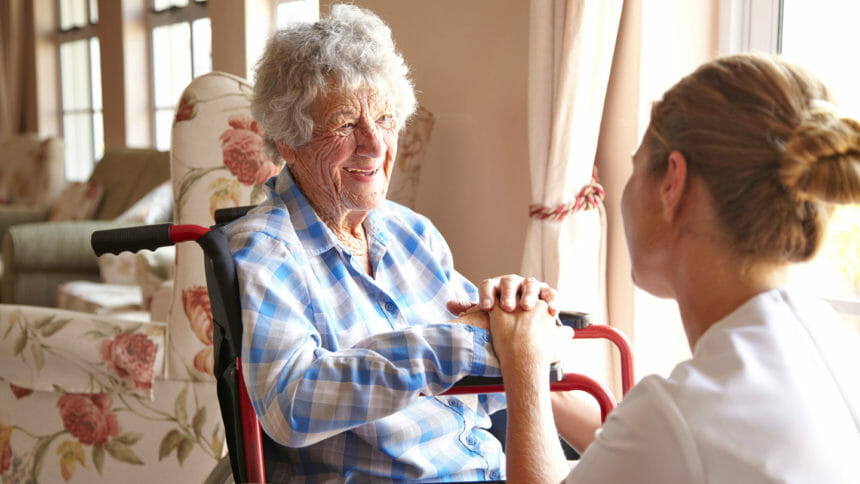
1. Begin with the assumption that your residents benefit from mobility.
“It is critically important for residents to feel free to pursue the activities they enjoy,” says Laurence Yudkovitch, senior product manager, Long-Term Care, RF Technologies. “But with that freedom comes concern. Seniors worry how to get help if they encounter trouble. Caregivers worry about assisting them and knowing how to locate them quickly.”
By identifying safety and health risks upstream in residents before they become wander risks, “most folks can continue to reside in a lower level of care far longer,” adds W. Bryan Fuhr, president of Senior Living and co-founder of Healthsense.
2. Carefully assess each resident’s elopement risks before applying monitoring solutions.
“It’s important for staff to assess the residents under their care, and make sure the freedoms granted match the capabilities, or limitations, of the residents,” says Yudkovitch.
Monitoring software can be customized to allow some residents the ability to freely wander around the entire building, while those needing greater levels of supervision can be kept in the memory care unit or monitored using external sensors.
“Seniors who are more independent may be able to roam freely and simply have a check-in/check-out procedure with staff,” all the better if they carry a mobile phone, which allows staff monitoring using a variety of available free apps today, Yudkovitch adds.
3. Passive and wireless features are a plus for wide-area mobile duress because they mitigate the chances of human error from activating and setting alarms, and allow far greater range for your residents to wander safely on campus grounds.
The goal for staff should be to enable residents and their visitors the ability to “wander” as far and wide as safely possible.
“With the proper training, passive technology minimizes the staff work per resident and even minimizes the residents’ effort,” says Jack Zhang, chief executive officer of Vitall Health.
He adds that many monitoring devices today use Bluetooth, GPS tracking — even facial recognition — to cast the widest safety net.
Passive systems with situational awareness features speeds emergency response and better informs it, helping reduce confusion and panic among both users and responders, says Mike MacLeod, president of Status Solutions.
4. Be mindful of alarm fatigue. Staff can easily become overwhelmed, or desensitized, by the din of beeps and buzzes from residents’ monitoring devices. Some feel the latter, which can bring ambivalence or inattentiveness, is the bigger threat.
“An intelligent system can address the issue of alarm fatigue by bringing only nearby, relevant, and current alert-able situations to the attention of staff, presenting them with enough detail to quickly and effectively respond,” says Rachel Owens, vice president of product management, PointRF Solutions, LLC.
“A solution that utilizes real-time locating systems and two-way communication can notify staff as residents begin to head toward unsafe areas or unsupervised exits.”
5. The most effective monitoring maximizes resident safety and security and range of mobility.
“Today’s smarter networks and devices, plus the right software to tie all of them together, makes it easier and more cost-effective than ever to create a safety and security bubble over a single facility or wide-area campus,” says MacLeod.
The key is situational awareness, a risk management strategy and technology framework that enables disparate networks, devices and systems to be integrated for one awareness experience through centralized monitoring, alerting and reporting, he adds.
Mistakes to avoid
- Ignoring residents’ mobility needs. It’s easy to overlook the emotional and physical benefits of “safe wandering” in your zeal to monitor everyone.
- Becoming numb to buzzes and beeps. Alarm fatigue can desensitize staff and increase risks.
- Relying too heavily on high tech. Even the smartest alarms are useless if staff aren’t trained to interpret and respond to them.
From the August 05, 2015 Issue of McKnight's Long-Term Care News





